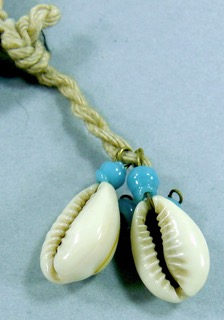One of the things I love about working with collections is how much I end up learning not just about the collection itself but also about the world. And all without needing to study! The saying: “You learn something new everyday”, really does hold true for collections work and I thought I’d share some of my fun discoveries with you.
Since mid-March or so, many of us have been working from home during the COVID lockdown, and collections staff are no different. Despite much of our work being hands-on when we are in the Museum and behind-the-scenes, there is also a lot we can do remotely. One of these is to update and maintain records on our Collections Management Database, or CMS, where we store information about our collection.
I’ve been working through a backlog of object images and uploading them to the database, transcribing labels and tidying up the object records as I go. Thanks to the magic of technology and the internet, this information is then available to view online, at https://collections.maa.cam.co.uk
You may have already seen my earlier blog about marsupials and how they are relevant to the collection. Are you ready for part two?
What is Nacre?

This was listed in the Accession Register as a “star-shaped forehead ornament, nacre.” Alfred Cort Haddon collected it in 1898 from an island called Mer in the Torres Strait. Alongside the Accession Register, we keep catalogue cards which detail information about objects in the collection. The catalogue card for this object says it was worn on a headband for dances.
Assuming nacre is a material and not a place or people, it’s fairly clear that it has something to do with shells. But what exactly?
Nacre, also known as mother of pearl, is an iridescent material made by molluscs for protection. It creates a smooth lining inside some shells and can build up around foreign bodies, forming pearls. Although its original purpose is protection, it has long been used by humans as a decorative substance, and can be seen in many of Museum of Archaeology and Anthropology‘s (MAA’s) objects. Here are some examples:

This shield was bought for the museum using funds donated by Professor Anthony Ashley Bevan. It was made in the Solomon Islands and is inlaid with many small section of nacre.

This game board was brought back from India in 1857 by Sir Richard Charles Lawrence and donated to the Museum. It was acquired in circumstances that remain unclear in the aftermath of the suppression of the Indian Uprising. We do not know who it previously belonged to. Each square contains a name written in Persian characters and inlaid with nacre.
If you’re feeling up to a bit of chemistry and fancy learning why shells are difficult to smash and how the windowpane oyster got its name, check out this podcast on nacre from Chemistry World.
What is a false cowrie?

This frontlet is listed in the Accession Register as “Frontlet of Ovulum shells,” and the database description used the term “cowrie shells”. But there is no such thing as an “Ovulum shell” and these don’t look like the cowrie shells we might be familiar with. So what is going on?
It turns out that there is a family of predatory or parasitic sea snails called Ovulidae. They are also known as the cowry allies or false cowries. Given the strange term “Ovulum,” we believe that this frontlet is made from pieces of Ovula ovum, or the common egg cowrie.
Cowries and cowry allies are part of the same superfamily, Cypraeoidea, but they are distinct groups. The cowries used as currency in some parts of Africa, Asia and the Pacific Islands, are the much smaller Monetaria moneta (‘Money Cowrie’) and M.annulus (‘Gold-Ringed Cowrie’).
Cowries have also been used as protective charms and decoratively in many cultures. Here are some examples within MAA’s collection:

These cowries are part of a Buddhist rosary, which was collected in China by Sir William Ridgeway. They were donated to the museum in 1927.

This is a royal drum from the Kingdom of Buganda, Uganda, covered with cowrie shells and glass beads. John Roscoe, a missionary who lived and worked in Uganda during the turn of the 19th-20th centuries, donated it to the museum.
Want to discover more? Here’s a little snippet from the Smithsonian Museum Natural History collection about why some cowries might be too pretty for their own good.
That’s all for now
Well done, you’ve reached the end of this whirlwind tour! As you can imagine, I’ve only shared a tiny fraction of the shells in our collections, so why not take a look yourself at what else we have?
Please visit the online collections where you can find out more about the objects that we care for.







